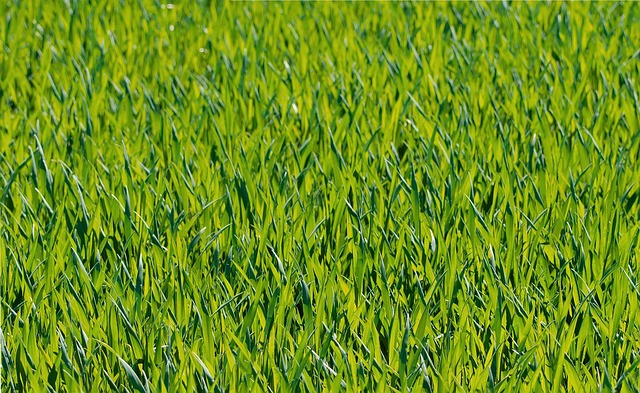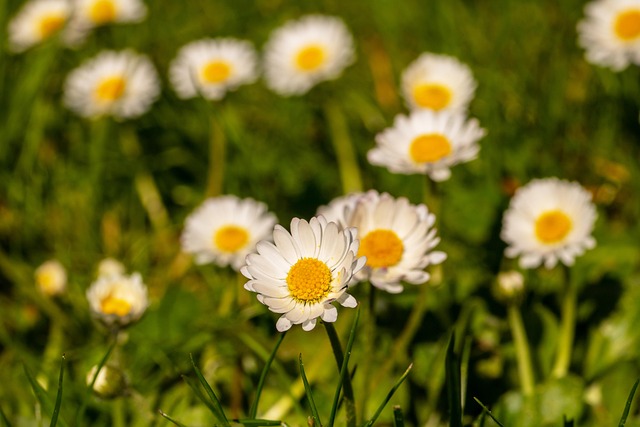Identifying lawn fungus in Colorado Springs is key to maintaining a healthy lawn. Common fungal infections include dollar spot, patchy needle cast, and rust diseases. Early identification allows for effective management using fungicides or organic methods. A robust overseeding maintenance plan, involving regular monitoring and corrective measures, prevents severe outbreaks. Seasonal considerations, like spring and fall weather shifts, impact fungus management; humid conditions can foster infections like brown patch and dollar spot. Regular inspections help in early identification and proactive measures to prevent severe fungus.
In Colorado Springs, maintaining a lush lawn is a year-round challenge, especially with the region’s diverse climate. One of the most common issues gardeners face is identifying and managing lawn fungus. This article delves into recognizing specific types of lawn fungus prevalent in the area and provides an essential guide to creating effective overseeding maintenance plans. By understanding seasonal considerations, homeowners can ensure healthy grass all year round, effectively combating potential fungal outbreaks while enhancing their Colorado Springs landscape.
- Recognizing Lawn Fungus in Colorado Springs: Symptoms and Types
- Creating an Overseeding Maintenance Plan for Healthy Lawns
- Seasonal Considerations for Effective Overseeding in Colorado Springs
Recognizing Lawn Fungus in Colorado Springs: Symptoms and Types

In Colorado Springs, identifying lawn fungus is crucial for effective maintenance. Homeowners often notice symptoms like patches of brown or yellow grass, thin turf, and a general decline in overall health. These issues can be early indicators of various fungal infections that thrive in the region’s unique climate.
Different types of lawn fungi include dollar spot, patchy needle cast, and rust diseases, each presenting distinct visual cues. Dollar spot creates round, brown patches with a grayish-white mold on the grass blades. Patchy needle cast targets conifer lawns, causing browning and shedding of needles. Rust diseases produce orange or yellow pustules on grass blades and sheaths, leading to weak and discolored turf. Prompt identification is key to managing these issues effectively through targeted fungicides or organic control methods.
Creating an Overseeding Maintenance Plan for Healthy Lawns

Creating a robust overseeding maintenance plan is essential for maintaining healthy lawns, especially in areas like Colorado Springs where weather conditions can be unpredictable. The first step is to identify lawn fungus, which is crucial as various fungal infections can significantly impact your grass’s health and appearance. Common lawn fungi in Colorado Springs include patchy diseases, brown patch, and rust, each requiring specific management strategies. Once identified, these issues can be addressed with targeted treatments, ensuring the soil and existing grass are in optimal condition for successful overseeding.
Regular monitoring is key to proactive maintenance. This involves assessing the lawn for any signs of stress, discoloration, or unusual growth patterns that could indicate fungal activity or other issues. By staying vigilant, you can promptly implement corrective measures, such as adjusting watering practices, applying fungicides, or reseeding problematic areas. Regular care not only prevents severe fungus outbreaks but also promotes a lush, vibrant lawn that can withstand Colorado’s changing seasons.
Seasonal Considerations for Effective Overseeding in Colorado Springs

In Colorado Springs, effective overseeding requires understanding and accounting for seasonal changes. Spring, typically from March to May, is ideal for sowing cool-season grasses like Kentucky Bluegrass and Fescues as temperatures rise and rainfall increases. This period promotes rapid germination and establishment before summer’s heat sets in. Conversely, fall, particularly between August and October, is perfect for warm-season grasses such as Zoysia and Bermuda Grass. Lower temperatures and cooler evenings foster growth while minimizing stress from extreme heat.
Seasonal considerations also encompass the monitoring and management of lawn fungus in Colorado Springs. Humid conditions during spring and fall can breed fungal infections like brown patch and dollar spot, necessitating proactive measures. Regularly inspecting your lawn for signs of discoloration, patches of dead grass, or fuzzy growth can help in early identification. Prompt action, including proper watering practices, aeration, and fungicide applications if necessary, can prevent severe fungus from taking hold.
Maintaining a lush, healthy lawn involves proactive measures, especially when it comes to addressing lawn fungus in Colorado Springs. By recognizing symptoms and understanding different types, homeowners can create an effective overseeding maintenance plan tailored to the local climate. Seasonal considerations are key to success; adjusting your approach based on the time of year ensures optimal results. Implementing these strategies not only enhances your lawn’s appearance but also promotes its overall health and longevity in this unique environment.
